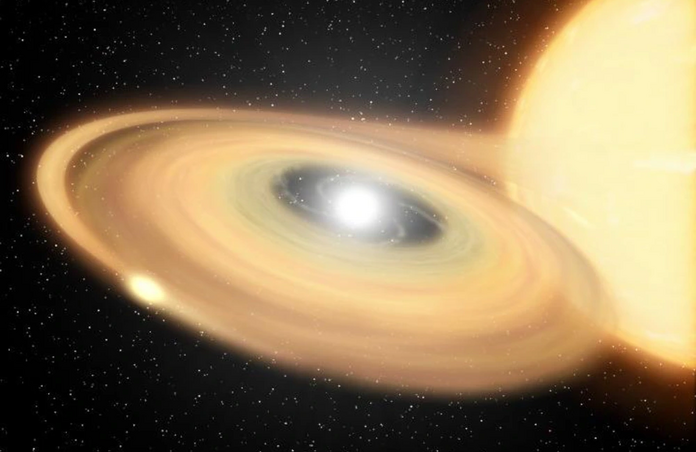Rare nova explosion predicted to occur next month

Astronomers around the globe are preparing to catch a once-in-a-lifetime event, where a nova explosion located 3000 light years from us will illuminate the night sky. These violent explosions are typically 100x brighter than the sun, and will be as bright as the North star in the night sky when it first erupts.
The system, known as T Coronae Borealis or the Blaze Star comprises a hot and dense white dwarf along with a cooler red giant. After the white dwarf ran out of fuel for nuclear fusion and collapsed to the size of the earth whilst still retaining the mass of the sun, it began draining its red giant partner of hydrogen gas. The gas accumulates in a disk around the dwarf, where it grows more unstable and eventually violently explodes. However, unlike supernovas, neither star is destroyed, and this process repeats itself every 80 years.
The T Coronae Borealis nova was last seen from Earth in 1946, whereas the first recorded sighting dates back to over 800 years ago in 1217. Although this rare event will greatly help aid in our understanding of turbulent binary systems, the weight lies on the shoulders of amateur astronomers at capturing the nova. It is too costly for powerful institutions such as NASA to focus their telescopes on one system for months. Additionally, such major observatories typically observe the faintest targets, therefore an event such as the Blaze Star nova will be extremely bright, so pointing these telescopes at it will saturate the detectors, resulting in an overexposed picture.
For example, amateur astronomer Bob Stephens has observed these two stars every chance he could for the last 3 weeks, hoping to catch the nova in action. It takes light from this system 3000 years to reach us, therefore the nova has already happened before the last of the pyramids were built. The exact date of the explosion varies, but majority of astrophysicists agree that it will happen before the end of the year, and likely before the end of August.
Once the nova has been spotted, alert systems have been set up to notify others. Some observatories have even gone to the lengths of programming their telescopes to override the current observation plan and point to the star when this alert is received. Due to potential saturation issues with more powerful telescopes, Palomar Observatory which is Caltechs research station in north San Diego County isn’t using the usual Hale telescope which spans 16 feet. Instead, they are using a much smaller telescope dubbed Gattini-IR. This smaller telescope will begin observing the Blaze Star every few hours once the nova has commenced.
This event will help provide insight into this phenomenon, since there is still much to be uncovered. For example, physicists are still unsure as to why some erupt every decade, but others don’t for millennia. Some researchers believe that novas are precursors to supernovas, a much more disruptive explosion which completely destroys the star, often leaving behind a black hole if the initial star was particularly massive.
Studying similar events has recently led to a number of discoveries about these volatile systems. For example, it was found that novas tend to catapult material into space at faster speeds than those predicted from the intensity of the explosion.
"We want to understand the physics of novae, so having a nova that's as close as T Coronae Borealis, which will hopefully be very well studied by all telescopes … we can get a very full picture," said Caltech professor Mansi Kasliwal.
--
Cover image: NASA
